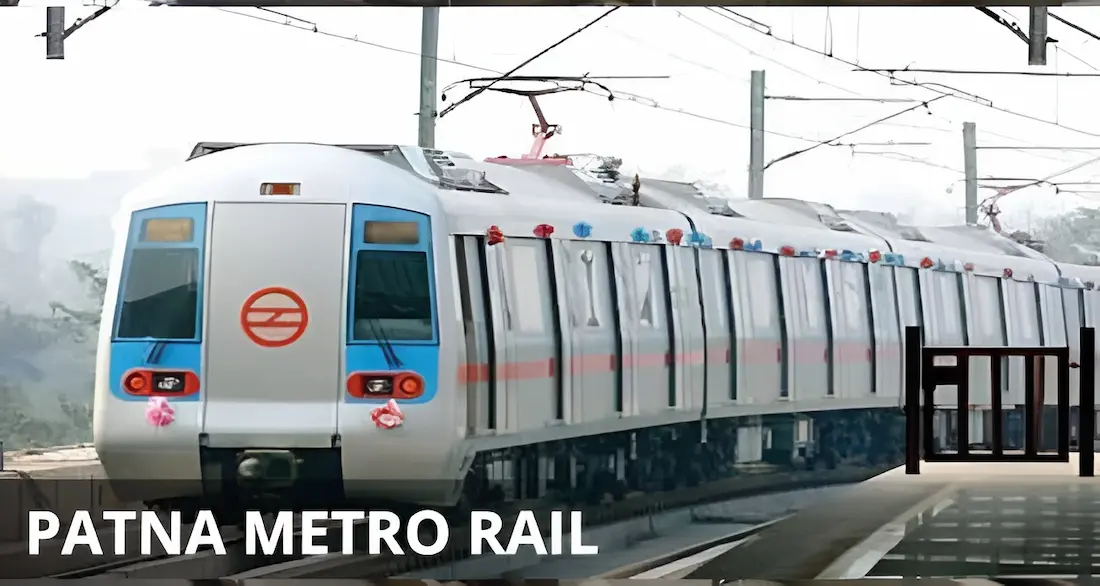
Patna Metro begins its first trial run, testing speed and safety systems
First Trial Run Marks a Historic Day for Patna
Patna Metro on Track – September 2, 2025, will be remembered as a turning point in Bihar’s journey toward modern urban transport. Patna Metro, a long-awaited dream for the city, officially began its first trial run on an 800-meter stretch inside the Patliputra depot. Though short in distance, the trial carried huge symbolic value, it was the first time a metro train ran on Patna soil.
Officials from Patna Metro Rail Corporation and DMRC oversaw the test, which focused on checking speed, braking systems, signal coordination, and track safety. Engineers confirmed that the 132 kV power station at the depot was fully activated, powering lifts, escalators, and the metro itself through massive 30 MVA transformers. This successful test sets the stage for future trials on elevated tracks and brings the city one step closer to public launch.
What Comes Next: From Depot to Elevated Tracks
This initial trial is part of the 6.49-km elevated “priority corridor” of the Blue Line (Corridor II), which stretches from Malahi Pakri to New ISBT. The corridor includes five stations: Malahi Pakri, Khemnichak, Bhootnath, Zero Mile, and New ISBT. Construction is progressing rapidly, and three stations are expected to be ready by mid-September.
Once these stations are complete, the next phase of testing will move out of the depot and onto the elevated tracks. If all systems perform well, Patna Metro could be ready for public rides by October 2025. The Khemnichak station will serve as a key interchange, linking two corridors and allowing passengers to travel smoothly across the city.
The metro stations are designed with modern facilities including:
- Escalators and lifts for easy access
- Ticket counters and concourse areas
- Retail spaces for food and shopping
- Safety systems and CCTV surveillance
Why Patna Metro Matters for the City
Patna has long struggled with traffic congestion, pollution, and slow travel times. The metro promises to change that. It will offer a faster, cleaner, and more reliable way to move around the city. For students, office-goers, and families, this means less time stuck in traffic and more time where it matters.
Here’s how Patna Metro will help:
- Reduce road congestion: Fewer vehicles on the road means smoother traffic.
- Lower pollution: Electric trains produce no emissions.
- Boost local economy: Businesses near metro stations will benefit from increased footfall.
- Improve connectivity: Major areas of Patna will be linked directly.
The ₹13,925 crore project is being funded by the state and central governments, along with support from JICA (Japan International Cooperation Agency). It’s not just a transport upgrade, it’s a leap toward a smarter, more connected Patna.
A Blend of Culture and Technology
Patna Metro isn’t just about speed and convenience; it’s also a celebration of Bihar’s rich heritage. The metro coaches will feature designs inspired by Madhubani art, and the interiors will showcase symbols like Golghar, Mahavir Mandir, and Nalanda ruins. This fusion of tradition and technology will make every ride a cultural experience.
Even the fare system is being designed with flexibility in mind. Ticket prices may range from ₹10 to ₹60 depending on distance, with benefits for long-distance travellers. A fare committee is currently working on finalizing the structure.
The metro will also include:
- Smart ticketing options
- Accessibility features for elderly and disabled passengers
- Emergency response systems
- Clean and well-lit platforms
Final Thoughts: A Promising Future for Bihar
The successful trial run of Patna Metro is more than just a technical achievement, it’s a symbol of progress, hope, and transformation. It shows that Bihar is ready to embrace modern infrastructure and offer its citizens world-class transport.
As the metro prepares to move from depot testing to full-scale operations, excitement is building across the city. If everything stays on track, Patna residents could be riding their very own metro by October. For a city that has waited years for this moment, the future finally feels within reach.
Also read – Crushed by Negligence: Chennai Metro Girder Collapse Claims Life, L&T Fined ₹1 Crore in Wake of Tragedy
Paris Metro or Penalty Trap? The Hidden Economy Behind RATP’s Revenue and Tourist Fines
Stay informed with the latest news and updates – only on Rapido Updates.